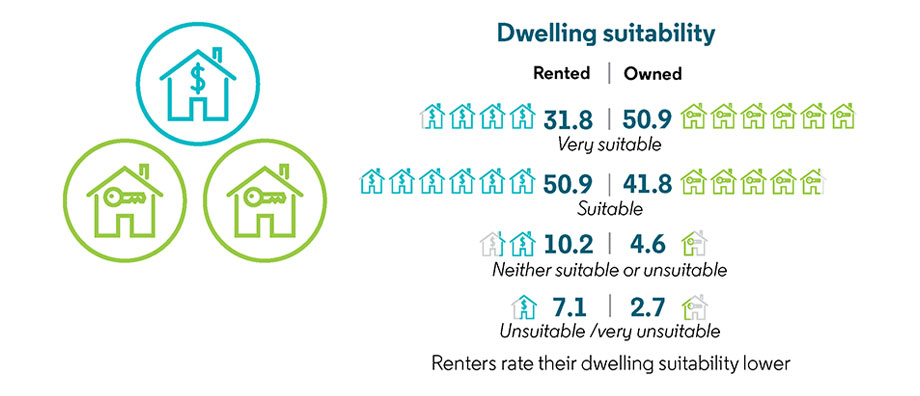Life satisfaction and housing suitability take a dip in 2018 wellbeing statistics
On the back of the Government’s Wellbeing Budget at the end of May, StatsNZ has released the latest tranche of wellbeing indicators feeding into the Living Standards Framework (LSF). On the LSF dashboard, these indicators sit under the “Our people” section. This section describes the current wellbeing of New Zealanders aged 15 and over across the LSF's current wellbeing domains. These statistics come from the 2018 New Zealand General Social Survey (GSS), a bi-annual survey.

Housing issues are highlighted in the most recent statistics, with more New Zealanders affected by major housing problems. While nearly a quarter of renters reported mould, cold and damp issues, and urgently needed repairs in 2016, this had increased to nearly one third in 2018. And only a third of renters (31.8 percent) thought their house was very suitable, compared to half of home owners (50.9 percent). This makes the healthy home standards placing the onus on landlords to provide warm, dry properties, very timely.
A tenth of Kiwis rated their housing as unaffordable. Renters were more likely to rate their home as unaffordable (14.2 percent), compared to home owners (8.0 percent).
* Rating is on a 0-10 scale, where 0 is lowest and 10 is highest. Absolute sampling errors for the estimates above can be found in the published tables.
Housing quality has historically had a strong correlation with overall life satisfaction, along with income, health, and loneliness. The percentage of New Zealanders with good outcomes across all four life domains decreased from 24.1 percent in 2016 to 21.5 percent in 2018. Those who reported good outcomes in only one domain rose from 13.4 percent to 15.4 percent over the same time period. Overall life satisfaction dropped slightly in 2018 to an average of 7.7 (on a 0 to 10 scale) from 7.8 in 2014 and 2016 surveys.
In 2018, the GSS asked about sexual identity for the first time with percentages being consistent with those of the 2017/18 New Zealand Health Survey. Most adult New Zealanders identified as heterosexual or straight (96.5 percent), with 1.9 percent identifying as bisexual, 1.1 percent as gay/lesbian, and 0.5 percent as other identities, which includes terms such as takatāpui, asexual, and pansexual. Those aged 18–24 were more likely to identify as bisexual, while those aged 25-44 were more likely to identify as gay/lesbian. StatsNZ notes that the new question better reflects the diversity of New Zealand in official statistics.
To see more on the current wellbeing of New Zealanders, visit StatsNZ.